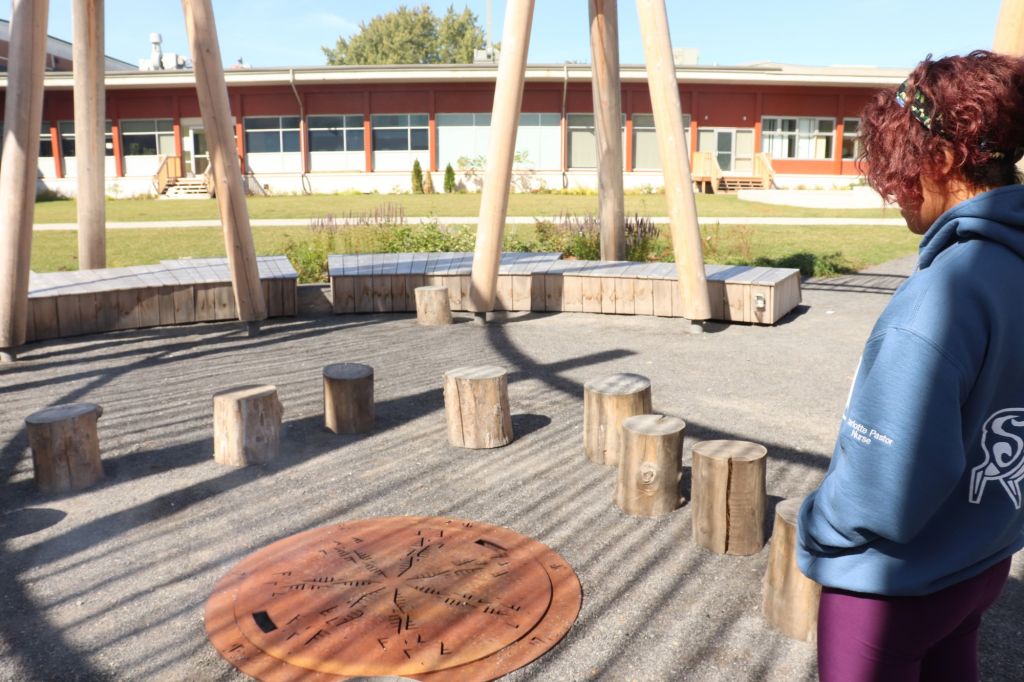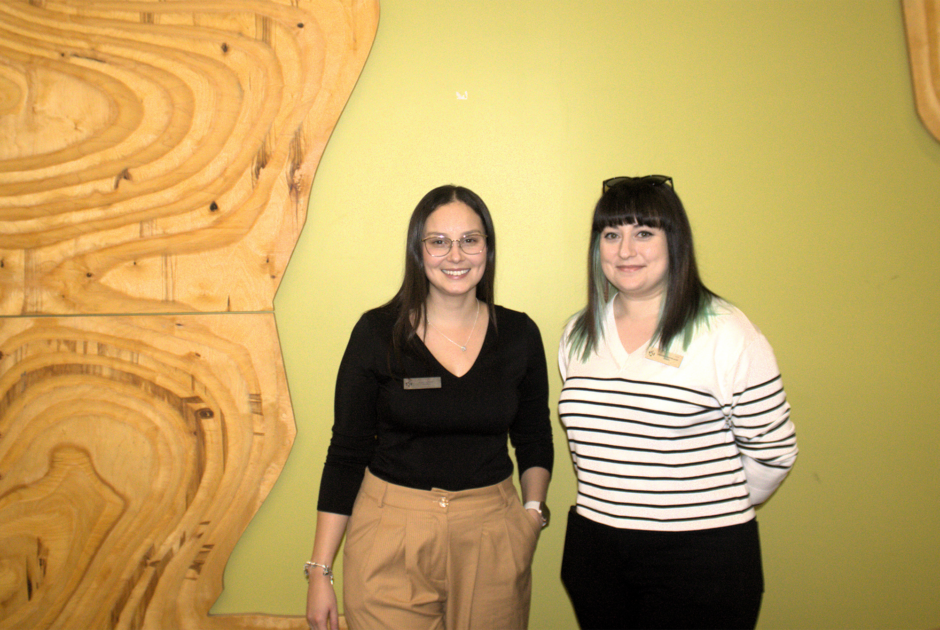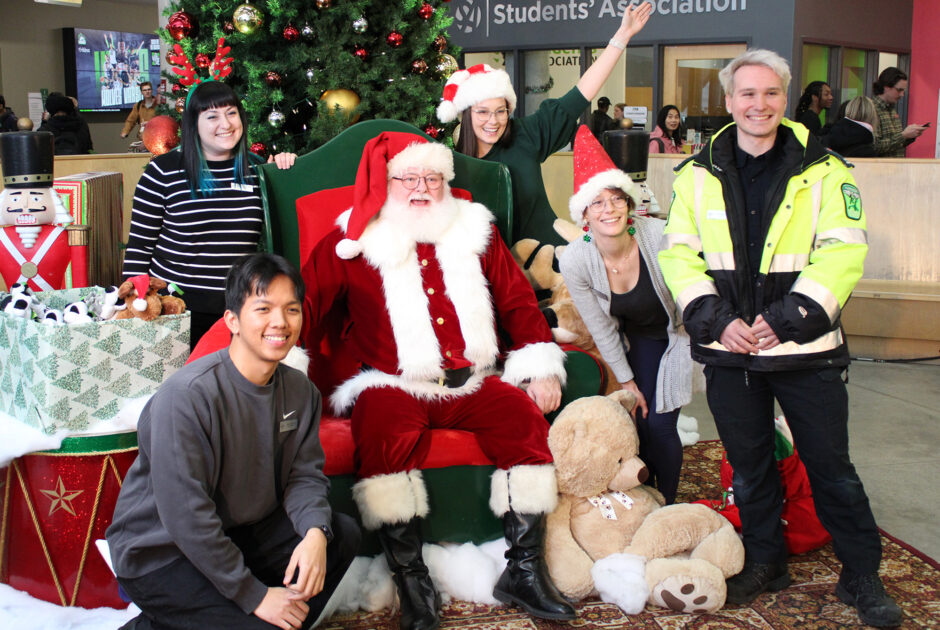Fire will soon burn bright in the DARE district

There is a spacious courtyard situated next to the DARE district. It is surrounded by buildings on all sides. Sunlight shines down while providing a social place in the middle and a study spot along the sides with chairs. This place is the Ishkodewan courtyard and in the Algonquian language it means there is fire.
It’s a fitting name for the courtyard as there is a fire pit in the centre with a gravel floor and wooden logs surrounding it. Stretched back a bit further there is wooden benches for the students to sit, socialize or lay down and bask in the sunlight. The top is covered with metal wire made to resemble the inside of an Indigenous fishing weir.
Jeffery Turner, partnership development specialist with a focus on the DARE District, says a lot of thought went into the design and into creating the fire pit.
“The structure itself replicates an Algonquin fishing weir which is really quite unique in its own right,” said Turner. “It’s inverted actually so that people can come underneath it, but the Algonquin very interestingly and intelligently and creatively drive little trees into the creek beds and they make it a passage way and they guide the fish where they want to go and where that is, is a net so they’re guiding the fish to the net.”
The architects took the story behind the Algonquin fishing weir, inverted it and created the structure so that it also incorporates all the other Indigenous elements that are found throughout not only the courtyard, but the DARE district as well.
Spiritual fire ceremonies are not done on a regular basis. Turner says there has to be a demand for it because the fire keepers come in from hours away outside the city.
The sacred fire – or spiritual fire – requires the presence of a fire keeper, someone who is sacredly trained with the Indigenous culture. The spiritual process starts with birch bark and a piece of flint. After, they would add cedar, kindling and wood brought in by the fire keeper themselves.
“Fire is a very unique and special place for people to gather,” said Turner. “It’s about storytelling and you’ll see it in those places in a circle, as in a lodge and no one has their backs turned to each other, you can always look them in the eye.”
Overall, 160 different plants – 1100 in total – occupy the courtyard, all Indigenous and sourced mostly in southern and eastern Ontario. The plants are designed to have purpose whether it’s sweetgrass or sage for ceremonies or strawberries to represent springtime.
Along with spiritual fires, there will also be social fires. Although she is not working directly with the fire ceremonies, SA president Deijanelle Simon heard from some students that they don’t see themselves in that space. SA wanted to help them feel more comfortable.
“We were speaking with Ron and he was like ‘Okay well I want students to feel comfortable in the space and we want to make it more inclusive,’” said Simon. “So we said why not make it a weekly thing so that students can participate at their leisure. We can have fun chill sessions that students can participate in.”
Before the SA can move forward with the social fires, they are looking for students who can take a couple hours at night to become fire watchers. They will learn how to extinguish a fire as well as how to start one.
“We’re finding more people interested in being out here,” said Turner. “So now, we just had a meeting with the Students’ Association, they’re going to start having weekly events out here with the fire so we can have more people come out and enjoy the garden.”








